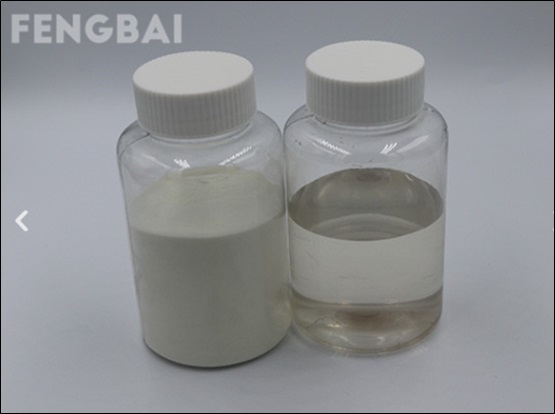Water Treatment Process in Food Processing and Other Industries
August 3, 2021The water treatment process is conducted in several industries, including the food processing industry, to attain clean and pure water for use. In the water purification procedure, undesired chemical materials, inorganic and organic components, and biological debris are eliminated from the water.
The process includes different stages, including adding flocculants and coagulants like PAC 30% into the water to purify it. This process aims to provide clean water for the food industry to use in its operations.
The process of water treatment is also used in other industries, like pharmacological, medical, and chemical industries. These industries use similar treatment procedures to remove the contamination concentrations, like fungi, viruses, algae, bacteria, parasites, and suspended particles from the water.
Table of Contents
Pretreatment of Water in the Food Industries
In the food industry, water treatment begins with the pretreatment of water. The process of pretreatment removes chemicals, biological contaminants, and other materials from the water. It includes three main stages:
1. Screening
Large materials and debris, like trash and sticks, are removed from the surface in the screening process. Screening must be done when the water is collected from rivers and lakes. Surface water has a higher chance of being infected and polluted with numerous contaminants.
The screening pretreatment might include adding chemicals in the water to control the bacteria growth in tanks and pipes. It might also include a sand filtration stage that encourages the suspended solids to settle down at the bottom of the container.
2. Preconditioning
After the screening, preconditioning takes place in which sodium carbonate is added to the water that has higher mineral content. In this step, the chemical is included in the water to eliminate calcium carbonate, one of the main components in marine life.
This stage makes sure that the hard water, leaving behind mineral deposits that could lead to clogging of pipes, is modified to achieve the soft water consistency.
3. Prechlorination
This is the final step in the pretreatment process in which chlorine is added to the water that may include natural organic materials in higher concentrations. This step is done to disinfect the water before the next steps begin.

Steps Involved in the Water Treatment Process After Pretreatment
Here are the steps taken to purify water in the food and other industries once the pretreatment of water is completed:
1. Coagulation and Flocculation
In the process of coagulation, positively charged chemicals are included in the water to help neutralize the negative charges. These negative charges are usually held by the solids, including dissolved organic materials, clay, and dirt.
Polyaluminium chloride PAC 30% is mainly utilized as a flocculant and coagulant and has an appearance of light yellow or white powder. It features a faster flocculation speed and a quicker sedimentation process. It is non-corrosive to pipeline equipment and can also remove heavy metal ions.
Once the charge is neutralized, larger particles are created with the added chemical. After the coagulation process, flocculation occurs. This is a process of gentle mixing that causes micro-flocs to collide and bond with one another to create suspended particles, called flocs.
Flocs continuously increase in size because of additional mixing and ultimately reach the right strength and size to prepare for the next step.
2. Sedimentation of Leftover Materials
The sedimentation step occurs once the suspended pathogens and matter settle down at the bottom of the container. More solids would fall to the bottom of the water container the longer it stays undisturbed.
The process of coagulation makes sedimentation more effective as it makes the materials heavier and larger, causing them to sink rapidly. If the water is being treated for community supply, this step must occur continuously in huge basins. Sedimentation is a low-cost and simple step necessary before the disinfection and filtration stages.
3. Filtrating Out Dissolved Particles
By now, all the floc particles settle at the bottom, and the water is clearer. The next step is filtration to remove the dissolved tiny particles still in the water, including bacteria, viruses, chemicals, parasites, and specks of dust.
The water is passed through physical particles varying in composition and size. The most common materials used are charcoal, gravel, and sand. Facilities often use slow sand filtration to remove the gastrointestinal disorders causing bacteria. This filtration combines chemical, physical, and biological processes in one step.
On the other hand, rapid sand filtration is a physical purification step that is mostly used in countries with sufficient resources to treat a higher volume of water. It is a cost-intensive and complex process that requires continuous energy, skilled labor, flow control, regular cleaning, and power-operated pumps.
4. Disinfection of Water
Another crucial step in the drinking water treatment is the disinfection process. Typically, chloramine or chlorine are used to disinfect water. The chlorine type used in this water treatment is known as monochloramine, which is different from the one used in swimming pools.
The main goal of this step is to eliminate and oxidize organic matter to prevent the spread of bacteria, viruses, and parasites that might still be in the water.
Disinfection also protects the water from any type of germs that might have entered during the distribution of purified water to businesses, schools, houses, and other places in the community.
Significance of Industrial Water Purification
Aside from domestic and drinking uses, industries consume a massive amount of water in their operations. Textile, food processing, petroleum, and chemical industries require clean water for rinsing, washing, cooling, heating, processing, manufacturing, and other relevant steps.
These industrial systems need treated water. Without the right water purification system, it can result in issues like poor quality of product, bacterial growth within processing and piping equipment, deposition, corrosion, and scaling.
Aside from the highlighted steps, different industries might include additional steps in the water treatment process, including ultraviolet irradiation, evaporation, ozone treatment, membrane systems, ion exchange, and electrodeionization, depending on the intended use.
The water treatment process provides access to purified water for domestic use and the food industry, and multiple other industries. These water treatment steps can help industries around the globe gather water from surface and groundwater sources and make it fit for use.




Awesome article.
After most mobile phones are turned off, the restriction on incorrect password input will be lifted. At this time, you can enter the system through fingerprint, facial recognition, etc.
Thank you for your sharing. I am worried that I lack creative ideas. It is your article that makes me full of hope. Thank you. But, I have a question, can you help me?